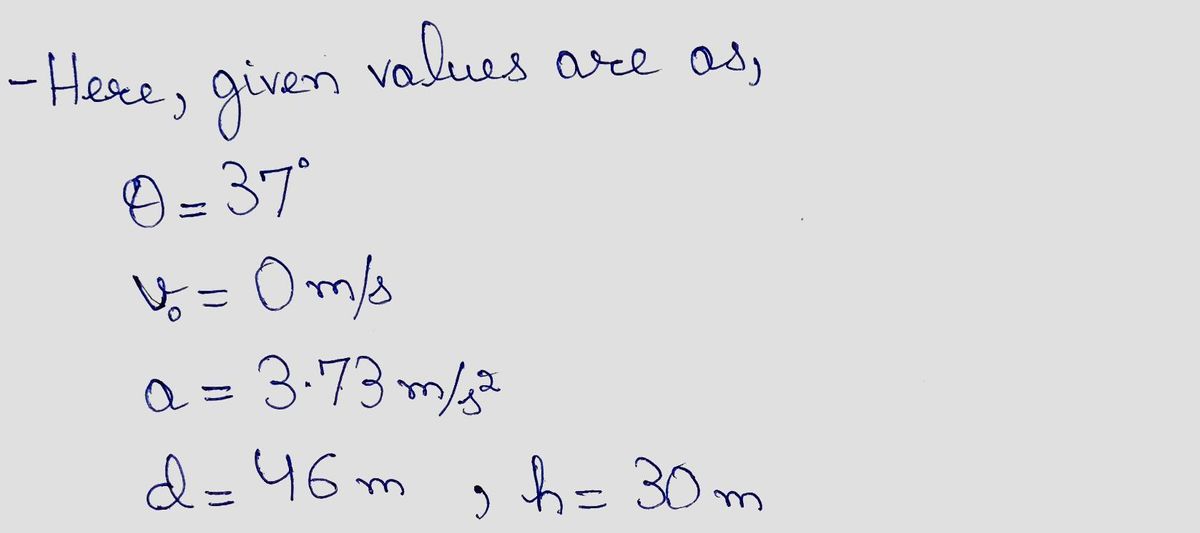A car is parked on a steep incline, making an angle of 37.0° below the horizontal and overlooking the ocean, when its brakes fail and it begins to roll. Starting from rest at t= 0, the car rolls down the incline with a constant acceleration of 3.73 m/s2, traveling 46.0 m to the edge of a vertical cliff. The cliff is 30.0 m above the ocean. (a) Find the speed of the car when it reaches the edge of the cliff. 19.80 X Your response is within 10% of the correct value. This may be due to roundoff error, or you could have a mistake in your calculation. Carry out all intermediate results to at least four-digit accuracy to minimize roundoff error. m/s (b) Find the time interval elapsed when it arrives there. 4.96 ✔S (c) Find the velocity of the car when it lands in the ocean. 31.30 x magnitude Your response is within 10% of the correct value. This may be due to roundoff error, or you could have a mistake in your calculation. Carry out all intermediate results to at least four-digit accuracy to minimize roundoff error. m/s direction below the horizontal (d) Find the total time interval the car is in motion. S (e) Find the position of the car when it lands in the ocean, relative to the base of the cliff. m Need Help? Read It Master It
Displacement, Velocity and Acceleration
In classical mechanics, kinematics deals with the motion of a particle. It deals only with the position, velocity, acceleration, and displacement of a particle. It has no concern about the source of motion.
Linear Displacement
The term "displacement" refers to when something shifts away from its original "location," and "linear" refers to a straight line. As a result, “Linear Displacement” can be described as the movement of an object in a straight line along a single axis, for example, from side to side or up and down. Non-contact sensors such as LVDTs and other linear location sensors can calculate linear displacement. Non-contact sensors such as LVDTs and other linear location sensors can calculate linear displacement. Linear displacement is usually measured in millimeters or inches and may be positive or negative.


Step by step
Solved in 4 steps with 5 images









